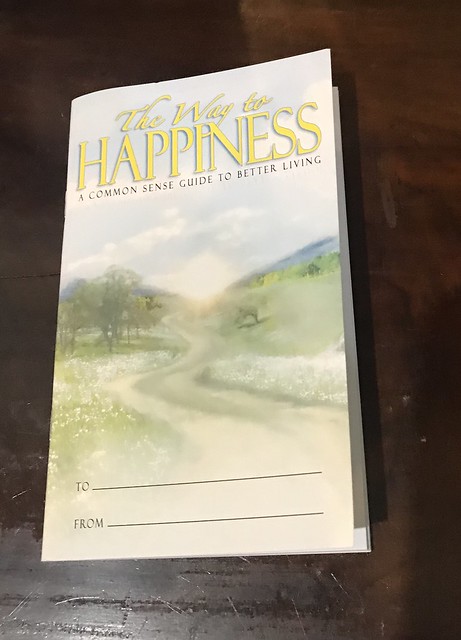
Once I’d finished sipping my little cup of espresso at Blue Bottle, I hopped on another bus; this time to Barnsdall Art Park in East Hollywood. It’s a unusual park on the top of a hill, featuring a house built by Frank Lloyd Wright.
There’s a not particularly large patch of lawn outside the fence around the house though it seems to be a hot spot for young couples to sunbathe and picnic. The best feature of the park is the view. On one side you can see Griffith Observatory and the iconic Hollywood sign in the distance.
On the other side of the park you can make out the top of the big blue Scientology building with the gold cross thing on the top. It’s a little hard to see as there are a few trees in the way, but it’s unmistakably the back of their Fountain Avenue building.
After leaving Barnsdall Art Park I had to make a choice — soldier on to Griffith Park, or head back downtown. Ultimately my legs were getting tired so I went with the latter and headed to the Metro’s nearby Red Line station. As I took the second escalator I noticed something out of the corner of my eye — a small book or pamphlet with an oddly cult-like design on the front. Thinking quickly as the escalator descended downward I reached back and grabbed it.
The little book turned out to be The Way to Happiness: A Common Sense Guide to Better Living by (who else?) L. Ron Hubbard. In that spontaneous moment I felt the universe winking at me, as though someone had left this artifact for me and me alone to discover.

The cover features what appears to be an oil painting of a path through greenery leading to a sunrise in a relatively clear sky, with the ridiculous long title floating among the clouds. It’s truly the stuff of nightmares for any competent graphic designer.
On the back cover is a sort of reverse warning, a claim that the book presents a completely secular moral code, presumably there to disavow any connection with Scientology, and claims to be “based wholly on common sense.” Do people need common sense explained to them? Apparently L. Ron Hubbard thought so.
Whereas the Ten Commandments managed to sum up a moral code with only ten bullet points (well, sort of) Hubbard needed twenty one items in his list with detailed short essays for each and often multiple subheadings. Say what you will about the man, brevity wasn’t his strong suit.
Hubbard goes so far as to provide definitions of many words he uses in footnotes, even rather simple words such as “example” and “practice” where it’s unclear how someone would be able to understand the definitions but not the words themselves. This concept comes directly from Scientology’s Study Tech which places an emphasis on readers understanding words correctly. While building your vocabulary is a pursuit most of us agree upon, Hubbard’s insistence that it’s always the reader’s fault for not understanding written text is awfully convenient for authors such as himself; it provides a form of inerrancy where authors cannot be wrong, only readers for misunderstanding written text.
As for the advice in the book, most of it seems pretty reasonable. Don’t harm others, brush your teeth, follow the golden rule, set a good example for others, etc. That said much of the advice is weirdly specific and seems purely reactionary to events Hubbard himself despised such as the rise of Communism and the American hippie counterculture movement.
For a book about common sense it contains two sections that are absolutely shocking. First, in section eighteen titled “Respect the religious beliefs of others” it starts out preaching tolerance, but by the end swings in the opposite direction instructing readers not to respect atheists and agnostics. To call this section self-serving for a man who started his own cult (with the express purpose of profiteering) self-serving would be a massive understatement.
Second, the book’s first full page titled “How to use this book” instructs the reader not only to give the book to a friend who needs the advice, but to order additional copies and give them to that friend so they can distribute them to others. This is a classic pyramid scheme.
But in the end, you know what the best part is? Scientology’s lawyers cannot threaten to sue me for any of these criticisms. After all, this book is completely secular and therefore unrelated to Scientology in any way.
